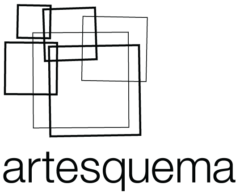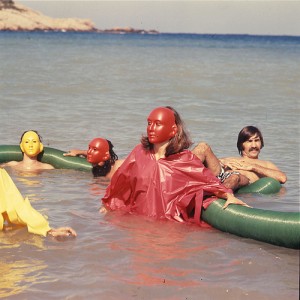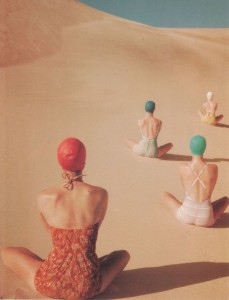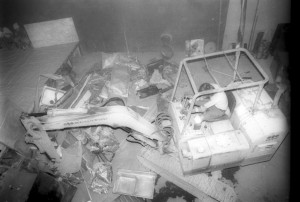A plataforma e editora britânica Arts Media Contacts anuncia a seleção dos 10 melhores blogs de arte, de acordo com seus critérios. Há coisas bem legais, mas quase todos estão na categoria-mãe “Blogs Comerciais” – o que não é exatamente um problemão.
Desta vez, o artesquema.com não entrou na lista…
:::::::::::::::::::::::::::::::
The Arts Media Contacts Top Art Blog 2010 Awards
Contact editorial@artsmediacontacts.co.uk
Jessica Wood
www.artsmediacontacts.co.uk
::::::::::::::::::::::::::::::::
1. VANDALOG
Top Art Blog of the Year
blog.vandalog.com
A perfect blog. Regular and interesting postings about street art across the world have created a genuine international community interested in this art form. To date there are just under 4000 followers, who are active in debating and posting and it is all very nicely brought together by its editor, RJ Rushmore. If you are looking to set up a blog to promote a specialist art form, then use this one as a model.
2. ARTS JOURNAL
Art News Blog of the Year
www.artsjournal.com
With its daily digest of the art news, seventeen highly qualified bloggers and a huge following, Arts Journal wins a top prize here. The sections are divided into clear sections such as: architecture, issues, art, music, culture, ideas, and the bloggers include leading figures in the academic and art world. The content is intelligent and the debate real. A guaranteed good read every day.
3. JONATHAN JONES ON ART
Art Blogger of the Year
www.guardian.co.uk/artanddesign/jonathanjonesblog
Jonathan’s short blogs fuel your brain and tell you exactly what you should go and see. We particularly liked his recent piece ‘The streets have stolen a march on modern art’. Working for The Guardian, his brief must be to feature events of ‘national interest’, but he manages to weave into this an eclectic mix of shows across the country in all sorts of places and not just the big names and brands. Other journos on the nationals should follow suit. We had many votes for Jonathan sent in to us, and the number of daily comments on his site shows that he a serious community of followers.
4. THE ART NEWSPAPER – FAIRS
Art Magazine Blog of the Year
www.theartnewspaper.com/fairs
If you did not received The Art Newspaper’s Daily bulletins from this year’s art fairs then you have missed out. The well-designed and up-to-the-minute newsletters drop into your inbox feeding you with news, opinion and gossip on the daily events at Frieze and Miami. For a moment in your morning you too are under canvas rubbing shoulders with oligarchs and celebrity collectors.
5. CATHEDRAL OF SHIT
Art Polemic Blog of the Year
cathedralofshit.wordpress.com
If you like a bitter rant against the art establishment with lots of expletives, then this blog is for you. It is very active, with plenty of anonymous researchers on the ground picking holes in government policy and exposing in-fighting, hypocrisy and nepotism in the art world. Examples are favourable reviews by national art critics of work by their personal friends. The design is pretty basic but the comment notable.
6. 1000 WORDSPHOTOGRAPHY
Photography Blog of the Year
1000wordsphotographymagazine.blogspot.com
This photography blogs highlights a sensational array of photographers, many of whom are relatively unknown. The blog, written mostly by Tim Clark, offers a mixture of well-written book and exhibition reviews, advice to photographers and news of fairs and competitions. The organisation also runs events in places such as Fez. Truly international.
7. SELF SELECTOR
New Art Blogger of the Year
selfselector.co.uk
Absolutely loads of people put forward Lorena Muñoz-Alonso for art blogger of the year. She clearly has a passionate group of followers. Lorena reviews exhibitions in such a way that you feel that you have been there. She asks enough questions about the art to challenge it, but she is not deliberately controversial or egotistical. She draws together exhibitions from public, commercial and alternative spaces, in a thematic way that makes you look at wider cultural issues.
8. ARMAGHOCLOCK
Artist’s Blog of the Year
armaghoclock.wordpress.com
There are so many good artists’ blogs that this is very difficult to choose. We were very careful not to select any artist that we represent or know as we don’t want to be outed in ‘Cathedral of Shit’. We have a preference here for the artist blogs that simply bring you behind the scenes as we are not artists ourselves. This blog was put forward by a subscriber and is an excellent example of an artist writing a journal on the development of a project. It brings you into the making of the work over the course of a year with clever use of images and sound. Unpretentious, clearly written and interesting.
9. ART RABBIT
Art Listings Blog of the Year
www.artrabbit.com
So many listings sites let us down because the searches don’t work or give you too much information or the content is out-of-date. This one doesn’t. It is beautifully designed and works perfectly – commendations to the graphic and software designers as well as the editors. The opinion pieces are nicely-written and the email blogs give you exactly the information you want on your selection of exhibitions opening or closing across the globe. A big thank you to Art Rabbit for bringing so many visitors into galleries and museums this year.
10. ART FAG CITY
Urban Art Blog of the Year
www.artfagcity.comCurator, lecturer and journalist Paddy Johnson goes around New York’s galleries and events and reports on art in the city with a fair amount of gossip and news too.
Visit www.artsmediacontacts.co.uk to read an extended list of the Top Arts Blogs 2010




